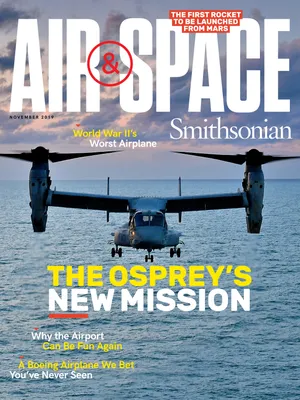Girl Scouts, Now You Can Earn a Badge in Space Science
A new way to encourage young women to learn about stars and exoplanets.
/https://tf-cmsv2-smithsonianmag-media.s3.amazonaws.com/filer/82/2e/822ea7c6-153e-4b30-82ed-07dd07c1084e/32b_on2019_bhi-res_live.jpg)
The Girl Scouts was just a year old when, in 1913, it began awarding badges to young women for electronics and aviation. More than a century later, it is challenging members to aim even higher, with the release this summer of three new space science badges encouraging girls to learn about astronomy and the exploration of other worlds.
Funded by NASA’s Science Mission Directorate, the SETI Institute, working with Girl Scouts of the USA, led a partnership of groups to develop the badges. They were issued at the same time as nine new cybersecurity badges and 18 new badges in coding, as part of Girl Scouts’ ongoing initiative to promote learning in STEM fields. The organization reports that its members are almost twice as likely as non-Girl Scouts to participate in STEM activities (60 percent vs. 35 percent), and 77 percent of girls say that, because of Girl Scouts, they are considering a career in technology. According to the Girl Scouts, almost every woman who has flown in space is a Girl Scout alum, including the first U.S. woman astronaut, Sally Ride.
Pamela Harman, the director of education at the SETI Institute and principal investigator on the Girl Scouts Stars program (designed to foster girls’ interest in STEM through space science), says that space plays a significant role in the broader STEM initiatives, because “part of science literacy is understanding our place in the big world, in the solar system, in the universe. And, once we realize that, I think it’s easier to think about protecting our planet.”
Girl Scout cadettes (grades 6-8) can earn the space science researcher badge by investigating properties of light and observing the night sky; seniors (grades 9-10) can obtain the space science expert badge by classifying stars and studying their life cycles; and ambassadors (grades 11-12) seeking the space science master badge will explore exoplanets through activities such as designing a habitat for an alien world.
/https://tf-cmsv2-smithsonianmag-media.s3.amazonaws.com/accounts/headshot/mark-strauss-240.jpg)

/https://tf-cmsv2-smithsonianmag-media.s3.amazonaws.com/accounts/headshot/mark-strauss-240.jpg)